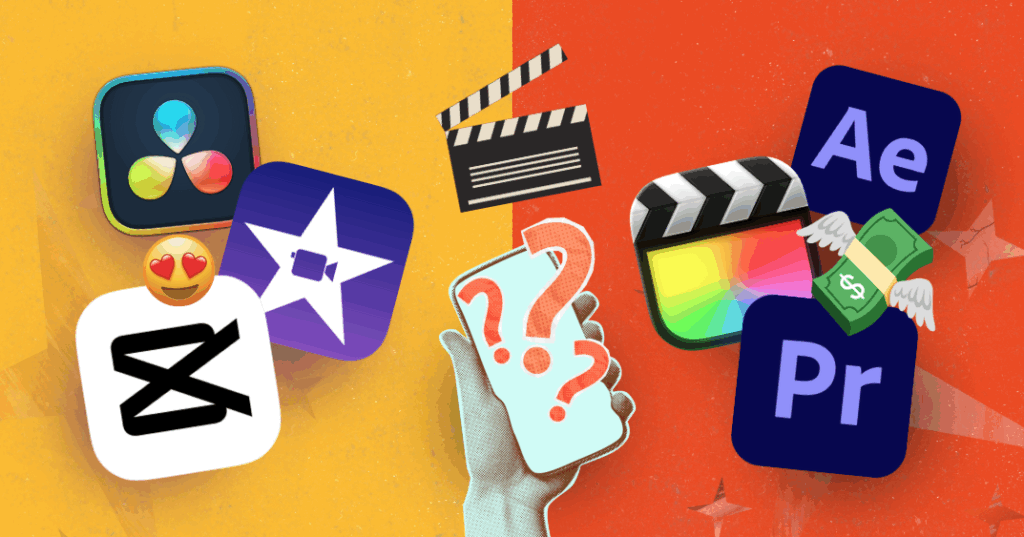Posts with videos generate nearly 50% more views than those without, and short-form clips are projected to make up almost 80% of all online content by the end of 2025. For brands and creators, the question isn’t whether to use video, it’s how to create it effectively and at scale.
That’s where the decision between free and paid video creation platforms comes in. Free tools like Canva, InShot, and CapCut make it easy to get started, while paid platforms like Adobe Premiere Pro or Final Cut Pro unlock professional-level control.
But comparing free versus paid video editing tools isn’t just about cost or editing features. To truly succeed, creators and brands also need to measure how their videos perform by looking beyond production quality to see which content actually drives engagement and results.
What Free Video Creation Tools Offer
Free editing platforms appeal to creators because they’re readily accessible for the everyday user and relatively easy to learn. For example, apps like CapCut, DaVinci Resolve and Canva provide ready-to-use templates and filters making them an attractive choice for those looking for quick and simple tools without the investment.
But free tools come with limits. Many only export in lower resolutions, add watermarks, or lock premium templates behind paywalls. While that might work for one-off posts, it makes it hard to build a strong, consistent brand identity.
And perhaps most critically, free editors’ usefulness ends at creating and publishing. You’ll still need to juggle different analytics tools to understand the videos’ impact online.
Why Paid Video Platforms Appeal to Growing Brands
Paid video editing tools offer creative control. Subscriptions to tools like Adobe Premiere Pro, Final Cut Pro, Capcut (paid) or Canva Pro offer access to premium templates, professional sound libraries, and advanced features like multi-camera editing and audio mastering.
For brands, this ensures polished, on-brand content that stands out in competitive feeds. Most importantly you do not have image or watermark limitations.
It’s clear that the demand is growing: the global video editing software market was worth US $3.09 billion in 2023 and is projected to reach US $5.13 billion by 2032, with 48.22 million users expected to pay for editing tools worldwide by the end of 2025. And with AI video editing tools coming to market almost daily, the choices will be significantly greater.
While we encourage the continuous testing of tools to create the best stories and content, even the best paid platforms stop short of connecting creation to ROI. You might export the perfect campaign video, but unless you track how it performs across channels, you won’t know if the investment pays off.
Why Performance Insights Matter for Video Success
When comparing free and paid video platforms, most discussions focus on editing features.
That makes sense for creating and finalizing videos. But once they’re live somewhere online, real success comes from understanding how your videos perform, by linking creative output to measurable results.
Tracking views, engagement, reach, and conversions and what the organic vs paid results are across each social or search platform, allows creators and brands to make data-driven decisions about what content resonates (and therefore what to create more of).
With how fast social media trends change currently, waiting weeks to assess campaign performance isn’t practical. Trends emerge and fade quickly, so having access to real-time metrics from TikTok, Instagram, YouTube, LinkedIn, and more helps teams see instantly which videos are driving results and adjust strategies accordingly.
Once you understand why performance matters, the next step is deciding which performance tracking tools fit your needs.
Free vs Paid Video Editing Tools: Choosing the Right Approach
Just like editing platforms, analytics tools often offer free and paid options.
Free tiers or native data per platform can provide core metrics and short-term data history. Paid options can include extended data history, multiple account connections, customizable dashboards, period on period performance and automated reporting, all of which can be helpful for larger teams or brands scaling their efforts.
Combining creative tools with performance insights helps brands create content that not only looks good but also drives real results.
Maximize Your Video ROI with Digivizer
For brands serious about growth, Digivizer is the ultimate tool for connecting creation to results. Its real-time dashboard consolidates metrics from all major social platforms, letting you see which videos drive reach, engagement, and conversions instantly.
With Digivizer, you can optimize campaigns, make smarter decisions, and turn video content into measurable business impact.






